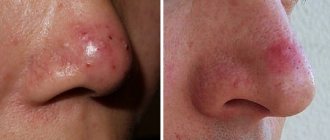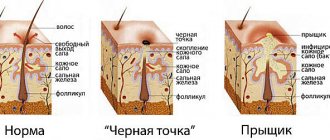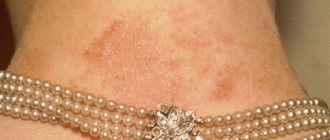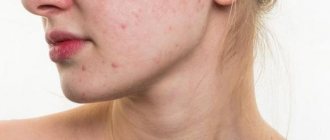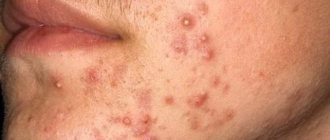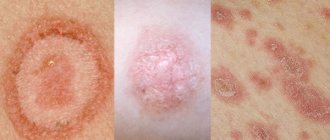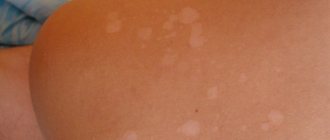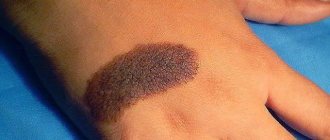The essence of the problem
Skin color is affected by:
- state of the circulatory system - narrowing or dilation of blood vessels, which gives paleness or redness;
- the amount of melanin and carotene.
When the coloring enzyme increases, the spots on the skin become brown, and when there is a deficiency, they turn white.
Some genetic disorders cause a person to not produce melanin. People with very fair skin, or albinos, are susceptible to sun damage and should wear special protective products in the summer.
Future ailments can be predicted by the shape of your hand
It has long been noted: the wider the palm, the better the health. However, people with wide palms and short fingers are prone to disorders in the circulatory system, especially increased blood pressure. Narrow palms with thin long fingers and pale skin are usually found in people with a delicate nervous system who are sensitive to sudden changes in temperature or atmospheric pressure, time zone changes, sharp sounds, and emotional overload. Those with small hands have an overly sensitive autonomic nervous system: their “signature” diseases are bronchial asthma, inflammation of the rectum, and hypotension. People with fleshy palms most often have problems with blood circulation: their metabolism is reduced, and hypofunction of the thyroid gland is possible.
Causes of white spots
White spots on the skin of the legs occur under the influence of several factors:
- Liver disorders. This organ produces melanin in the amount necessary for the body. When any disease occurs, the color of the skin changes.
- Insufficient secretion of the pancreas, blockage of the bile ducts.
- Problems with the thyroid gland - the amount of hormones produced affects the skin.
- Parasitic infestations.
- Poisoning.
- The period of bearing a child.
- Frequent exposure to the sun.
- Immunodeficiency states.
- Stressful situations.
Diseases that appear on the palms
April 16, 2017
Diseases that appear on the palms
Not all people know that health problems can be displayed on our palms and arms. If you take further information into account, you can significantly reduce the list of your chronic diseases. We can influence the functioning of organs by stimulating various points on the palms. For example, by pressing or warming them.
Human palms are a source of information about the entire body; from them you can see the future or past events (palmistry teaches this), read the character of people, their inclinations and habits, and also decipher the state of health.
What health problems does skin tone indicate?
— Liver problems (hepatosis or hepatitis) are not excluded if the hands are reddish in color. “Marble” patterns on the palms indicate vegetative-vascular dystonia. A yellow tint indicates problems with the pancreas (liver).
— If brown spots appear on your hand, you should consult a doctor. They form not only with age, when the production of pigment is disrupted, but can also indicate a diseased gallbladder.
If there is a lack of vitamins A and D in the body, the skin on the palms may peel and dry out. If the skin on your palms peels off in large pieces, you should visit a dermatologist - a fungus is possible.
Diseases and temperature of the skin of the hands
- Always cold hands can be a sign of hemodynamic disorders or a lack of nicotinic acid. It is necessary to consult a doctor and take vitamin complexes, as well as eat lean meats, mushrooms, fish, dairy products, vegetables and cereals.
— Increased hand temperature indicates the inability of the liver to cope with medicinal, alcoholic and other chemical toxins. Doctors call such palms “liver palms.”
The effect of “crawling goosebumps” on the palms indicates this. that the endocrine system does not work well. Endocrine problems, such as hyperfunction of the thyroid gland, are manifested by constant moisture in the palms. Dry and pale hands are a sign of hypofunction (insufficient functioning) of the thyroid gland. Of course, an objective diagnosis can only be made by ultrasound of the thyroid gland and consultation with a specialized specialist.
How to determine deviations from the fingers?
— If your little fingers often go numb, this may be due to heart disease. Numbness of the thumbs is a sign of pulmonary failure. Deep long folds on the upper part of the phalanges appear with endocrine diseases and diabetes mellitus.
— If there are problems with the gastrointestinal tract, the fingertips become red. The kidneys or liver indicate their ill health by their burgundy or even purple color.
— The presence of spots at the bases of the thumbs (otherwise they are called the tubercles of Venus) is a signal of problems in the genitourinary system. Problems in the functioning of the large intestine are reminded of themselves by the constant itching of the index finger of the right hand. When the gallbladder does not work well, the skin on the back of the fingers often becomes rough.
Health status by joints
Crispy hand joints are the first symptom of calcium deficiency in the body. Too flexible or, conversely, rigid joints signal deficiencies in the functioning of the gallbladder (liver).
Painful sensations in the joints and their acquisition of an irregular, thickened shape are a symptom of arthrosis and gout. Swelling, swelling and redness of the joint can be a sign of polyarthritis; if such manifestations occur, you should urgently be examined by a specialist
The shape of your hand will tell you about your health
Possible diseases of a person can be judged by the shape of his hand. Wide palms of a person usually indicate very good health. But if at the same time he has shortened, thick fingers, this may indicate a tendency to cardiovascular diseases and hypertension. Then you may be advised to visit a cardiologist for consultation.
If you have narrow palms and long fingers, you can talk about the subtlety of nature, which reacts sharply to changes in temperature conditions, time zones, climate, and pressure surges. Such a person will have difficulty reacting to the harshness of sounds and the strength of emotional stress.
Owners of small hands are distinguished by their sensitivity to the outside world; they can often suffer from asthma, hypotension, and inflammation of the rectum. Massive large palms may indicate a slow metabolism. They have circulatory disorders and hypofunction of the thyroid gland.
Ancient Chinese medicine believes that the place located in the center of the palm is the energy center of the body. If, when you press on this place, you feel strong sharp pain, then you need to urgently check your health.
Ivan Ivanov
Spots on a child
The appearance of white spots on the legs in childhood does not mean the development of vitiligo. Hypomelanosis can appear at birth or several months or years later. The disease may be a symptom of damage to the central nervous system or peripheral nervous system and requires a full examination to resolve the problem.
As they grow older and their immunity develops, mothers notice the formation of white spots on their legs. After a while, in most cases, small dots go away on their own, but until this happens, they require observation by a specialist without specific therapy.
Skin spots can also be caused by allergies, ringworm or fungus. These formations peel, itch, become inflamed, or become crusty. If the above-described signs appear, you should not self-medicate, but show the child to a doctor.
Diagnostics
White spots on the calves and feet require careful examination.
Before making a diagnosis and determining a treatment regimen, the doctor collects an anamnesis of the disease and conducts a visual examination and palpation of the rash area.
Basic research methods:
- blood for general analysis and biochemistry;
- immunogram;
- hormone testing;
- Ultrasound of the liver, kidneys, pancreas and thyroid glands;
- feces on worm eggs;
- dermoscopy;
- scraping from stains if crusts are present;
- blood culture.
Treatment
Therapy for the disease should be comprehensive and include not only treatment with medications, but also physical procedures and dietary nutrition.
Conservative
If rashes in the form of white spots appear on the legs, then apply local treatment to the affected areas. It is not possible to completely get rid of the defect, but many cosmetic procedures help to visually reduce the size of the formations.
One of the treatment methods is exposure to UV rays. To stimulate pigmentation processes, rubbing melagenin lotion into problem areas before the procedure is recommended. The result is noticeable after some time: the spots on the skin initially acquire a reddish tint, and later darken and do not differ in color from the surrounding tissues.
Medicines
The treatment regimen and selection of drugs should be carried out by the attending physician after establishing the cause of the disease.
Systemic treatment includes taking the following medications:
- Short course hormonal drugs. The use of the drug is prescribed both in tablets and topically in the form of creams or ointments.
- Immunostimulants to strengthen the body's defenses.
- Medicines that improve the functioning of the digestive system.
- Agents that restore metabolic processes in the liver and pancreas.
- Vitamins and minerals.
- For frequent stress - soothing teas, antidepressants.
- Antifungal creams.
- Antihistamines.
- Antibiotics, antiparasitic drugs.
How to remove stains
If skin pigmentation is detected, you should contact a vascular surgeon or phlebologist. If varicose veins have not been diagnosed before, then first of all you will have to make an appointment with a therapist, who will prescribe primary tests to identify the nature of the origin of the spots. However, usually one glance by a doctor at the patient’s lower extremities is enough to diagnose varicose veins.
After a preliminary consultation, a specialist will tell you how and how to treat the disease in order to quickly get rid of stains as well.
It should be understood that therapy should be primarily aimed at eliminating the root cause of the pathology, and not its consequences in the form of pigmentation. Specific measures should be prescribed exclusively by the attending physician, since the appearance of spots indicates late stages of the development of the disease, and thoughtless and unjustified use of medications and techniques can seriously harm.
It is possible to completely cure varicose veins, and with it the spots. To do this, you need to apply complex treatment, consisting of the following areas:
- taking medications (phlebotonics, anticoagulants, antiplatelet agents);
- undergoing physical procedures;
- if necessary, traditional surgery or minimally invasive procedures;
- wearing compression garments;
- morning exercises and acceptable physical activity.
As healthy blood flow is restored, the pigmentation will disappear. In very rare cases, it remains after the disease has completely stopped, so it has to be treated additionally. In these cases, the doctor prescribes an individual therapeutic complex based on the patient’s characteristics and contraindications.
Complications
In advanced cases, in the absence of timely treatment, undesirable consequences appear:
- changes in the normal functioning of the peripheral nervous system lead to the development of flat feet and painful formations on the feet - corns, calluses;
- hyperkeratosis, fungal diseases;
- ulcerative heels, cracks.
Prevention
To prevent the development of unwanted pigmentation, you should adhere to the following rules:
- Maintaining proper nutrition: introducing vegetables, fruits, and herbs into the diet.
- Eliminate unhealthy foods - smoked foods, fatty foods, fried foods, salted fish, fast food.
- To refuse from bad habits.
- When visiting public places, baths or saunas, use only personal items and hygiene products.
- Daily moderate physical activity or a long walk in the fresh air.
- Strengthening the immune system: hardening, walking barefoot on grass or pebbles.
- Timely consultation with a doctor at the first signs of illness.
White spots on the legs are often a sign of a serious illness. Paying attention to your health will help you overcome the problem in a short time, returning your skin to a beautiful natural color.
How to speed up the process
If blue, brown or red spots on the legs due to varicose veins cause significant psychological discomfort, you can try to speed up their elimination. To do this, you can use alternative methods of medicine, but only after agreement with your doctor.
An effective procedure in this regard is hirudotherapy (placement of medicinal leeches). To do this, you must contact a reliable medical institution that has the appropriate license to conduct such activities. As a result of the use of leeches, restoration of blood circulation in the treated area is stimulated. As a rule, they are placed along the entire affected vein. To achieve results, you need to undergo 8-10 procedures, each of which can last from 5 to 40 minutes.
For symptomatic relief of itching, you can take antihistamines, for example, Suprastin, as well as external agents with a cooling effect.
In addition, in addition to the main therapy, traditional medicine can be used to eliminate symptoms and reduce the intensity of pigmentation. A decoction of carrot tops, prepared at the rate of 1 tbsp, helps well. l. crushed raw materials per glass of boiling water. The resulting product must be consumed twice a day, 100 ml, if desired, you can mix it in equal proportions with tea.
Another option is treatment with a decoction of celandine. For this, 2 tbsp. l. Dried and crushed herbs must be poured into 0.5 liters of boiling water and simmered over low heat for 5-10 minutes. The resulting broth should be filtered, cooled to an acceptable temperature and used as a compress, applied for 40-50 minutes. This product is quite aggressive, so it can be used no more than 3 times, and in order not to dry out the skin, you need to lubricate it with essential oil after each procedure.
A compress can also be made from natural liquid honey. It should be spread on a thick linen rag or gauze, applied to the affected area and wrapped with a bandage without pressing. This procedure can be done once a month, it is advisable to carry out 4 sessions in total. You need to start with 15-20 minutes, gradually increasing the duration of the process.
For a compress, you can use a mixture of yogurt and crushed fresh wormwood leaves in equal proportions. The resulting mass must be applied in an even layer on gauze or a napkin, applied to the affected area and wrapped with a bandage for 30 minutes. You can use this compress until the stains are completely removed, but you don’t need to do it too often.
